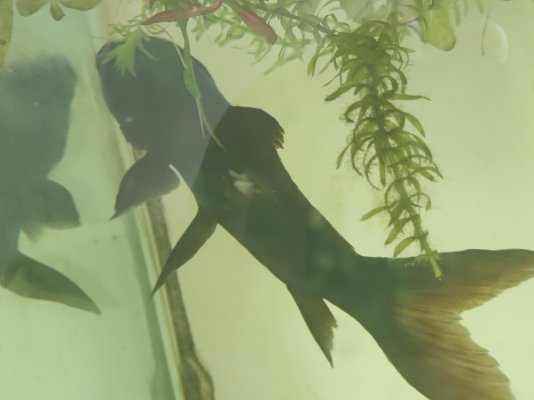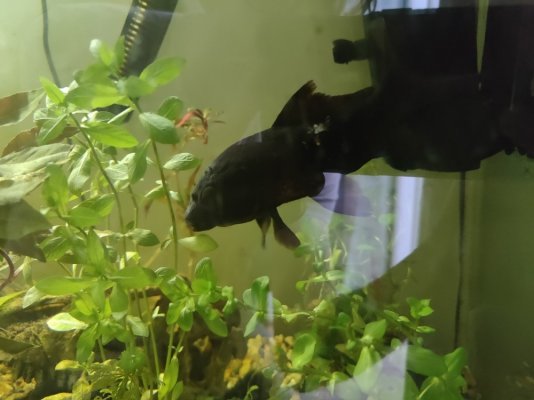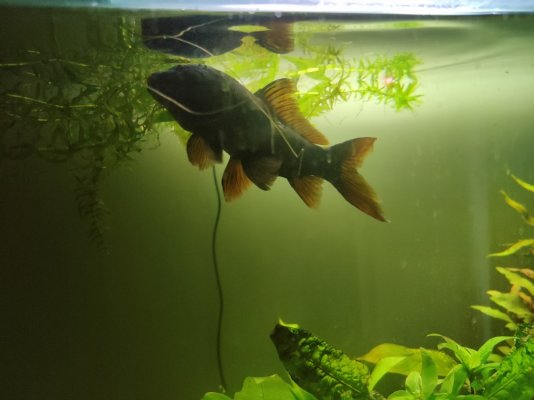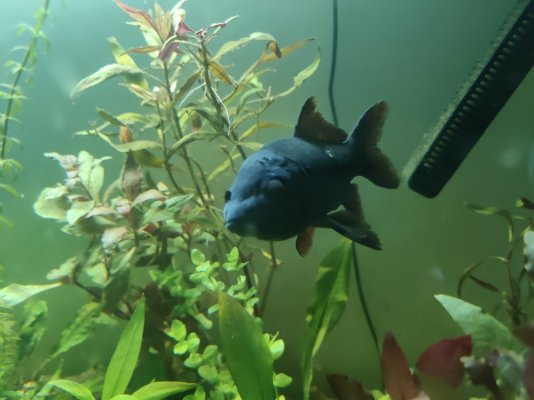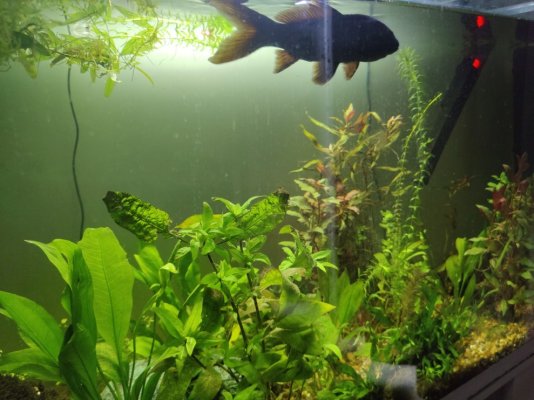My partner has had a goldfish (Black boar?) since she was a teenager, he must be 14 or 15 years old now.
When we moved in we transferred him over to a 400L tank so he has loads of space. I give him a partial water change once a week. He's been in this tank for 4 years now.
He's got lots of live plants but they do tend to die after a few months (Not sure if i'm doing something wrong there, I do use a plant feed)
My main problem is that he's recently lost some scales (See picture)
From water tests it seems that ammonia levels are fine, which is what google pointed me to. The other conerns are hardness (A bit too hard) and high Nitrate levels. I've added more plants and completed a couple of larger water changes (with rain water) to try and bring down the nitrate but to no success.
Could the nitrate be causing the scale loss?
Thanks in advance for any help!
Ben
When we moved in we transferred him over to a 400L tank so he has loads of space. I give him a partial water change once a week. He's been in this tank for 4 years now.
He's got lots of live plants but they do tend to die after a few months (Not sure if i'm doing something wrong there, I do use a plant feed)
My main problem is that he's recently lost some scales (See picture)
From water tests it seems that ammonia levels are fine, which is what google pointed me to. The other conerns are hardness (A bit too hard) and high Nitrate levels. I've added more plants and completed a couple of larger water changes (with rain water) to try and bring down the nitrate but to no success.
Could the nitrate be causing the scale loss?
Thanks in advance for any help!
Ben

